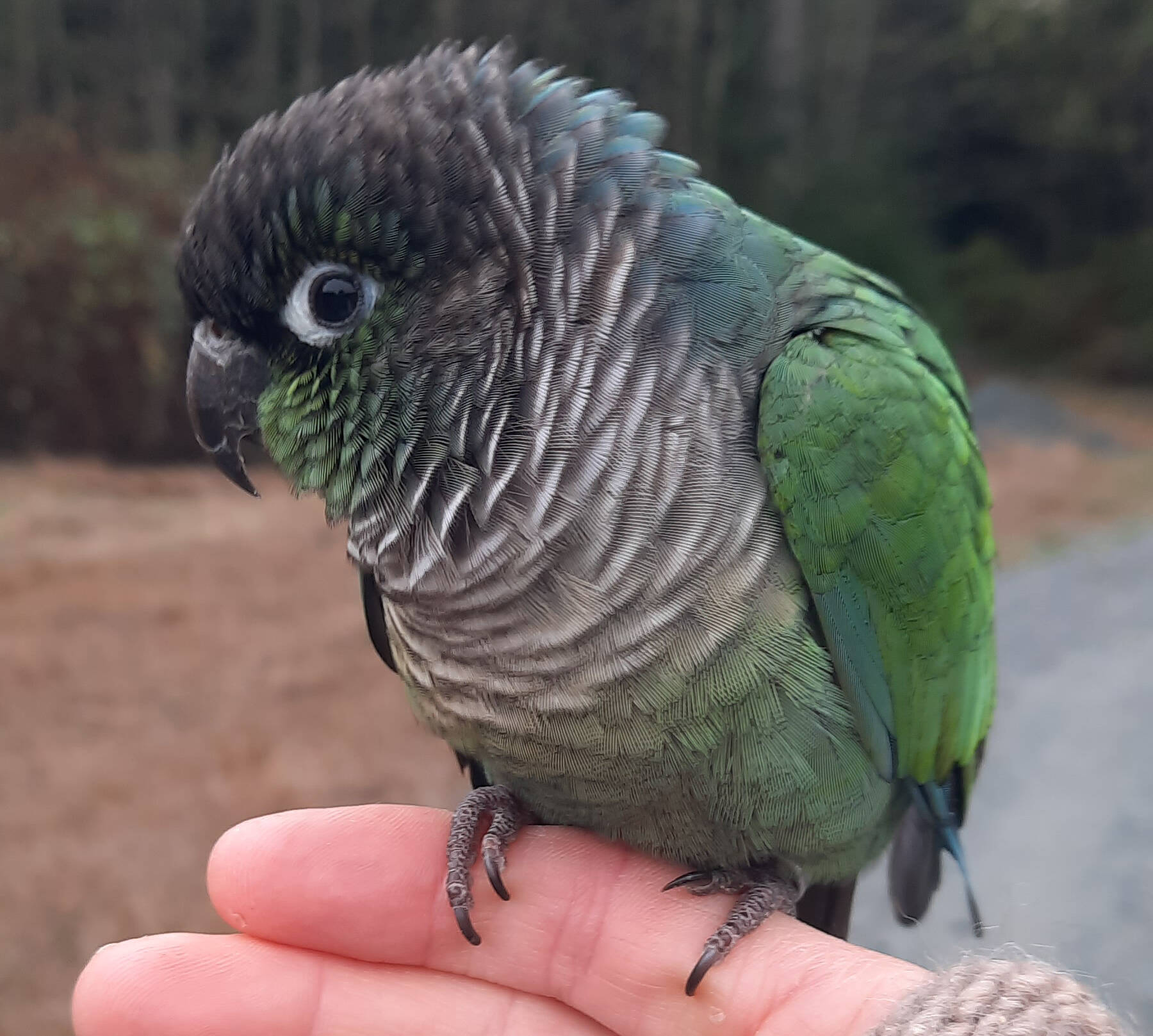Whidbey Island residents should be on the lookout for a greenish parrot that got lost during a free-flight outing.
Kopia, a turquoise green-cheeked conure, was last seen near the Goose Grocer in Bayview. Anyone who spots the lost bird should call the owner, Rei Rosenquist, at 360-932-8367.
Rosenquist cares for feathered friends at the Flying Colors Aviary near Langley. The private aviary is home to 150 parrots in all shapes, sizes and colors, and Rosenquist has her own flock of 25 birds.
On Jan. 10, Rosenquist took seven of her parrots on a free-flight outing in the area of Langley Road. The highly intelligent birds are meticulously trained to safely fly outdoors without any kind of restraint and then return to Rosenquist, whom they consider one of their own. Since birds didn’t evolve to live inside human-made structures, Rosenquist explained, free flying outdoors on occasion raises their qualify of life.
“Free flying helps them maintain their physical and mental health,” she said, adding that some birds — like a certain cockatoo — may not have the right personalities for free flying.
Unfortunately on the outing last week, the parrots flushed a red-tail hawk, which proceeded to dive at them. When her startled birds returned, Rosenquist only counted six.
Rosenquist has searched tirelessly and posted a lost-bird poster with a $500 reward on social media, but Kopia remains lost. On Monday, a resident spotted the parrot on a telephone wire in Bayview. Rosenquist quickly responded and searched the area, but Kopia was nowhere to be found.
Green-cheeked conures, also known as green-cheeked parakeets, are a type of parrot that is about the size of a robin and native to Brazilian rainforests, according to the World Parrot Trust. They are popular pets due to their playful personalities and ability to mimic words and other sounds.
“They are troublemakers,” Rosenquist said. “They are feisty. They are spicy.”
Rosenquist explained that Kopia, as a free flyer, is acclimated to Whidbey Island weather, which has been wet with temperatures down into the 40s. The conure should be able to survive this long on her own, Rosenquist said, if she can find food and doesn’t meet any bird-eating raptors.
Rosenquist, an experienced parrot rescuer and rehabilitator, rescued Kopia from a humane society in Hawaii four years ago. The 9-year-old has been free flying for two years without incident. She answers to “Kopia,” but isn’t very interested in learning words, Rosenquist explained. She knows a couple of words, like “what,” but mostly speaks them at random times.
Wild conures can fly as much as 30 miles in a day, so there’s a pretty wide area on Whidbey where Kopia may be located.
If the Kopia would happen to land on someone, Rosenquist advised, the bird should be calmly brought inside a house or confined in a car.
But please, do not clip the bird’s wings.



